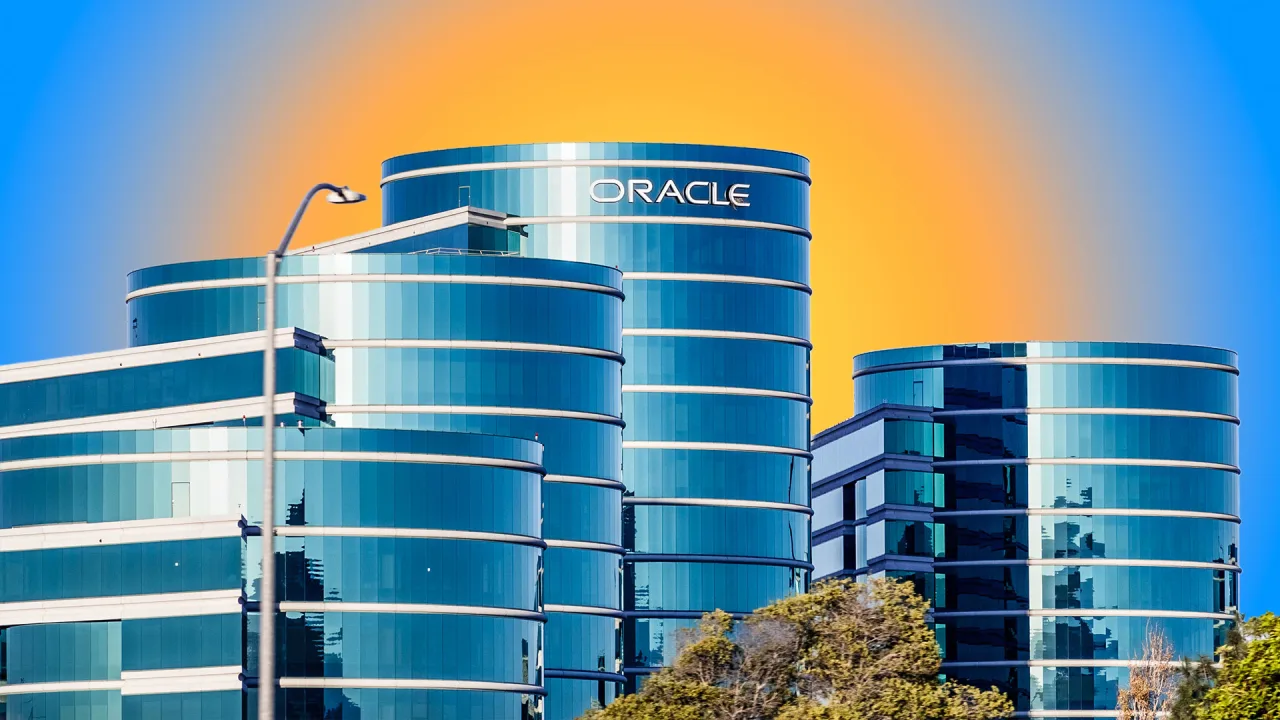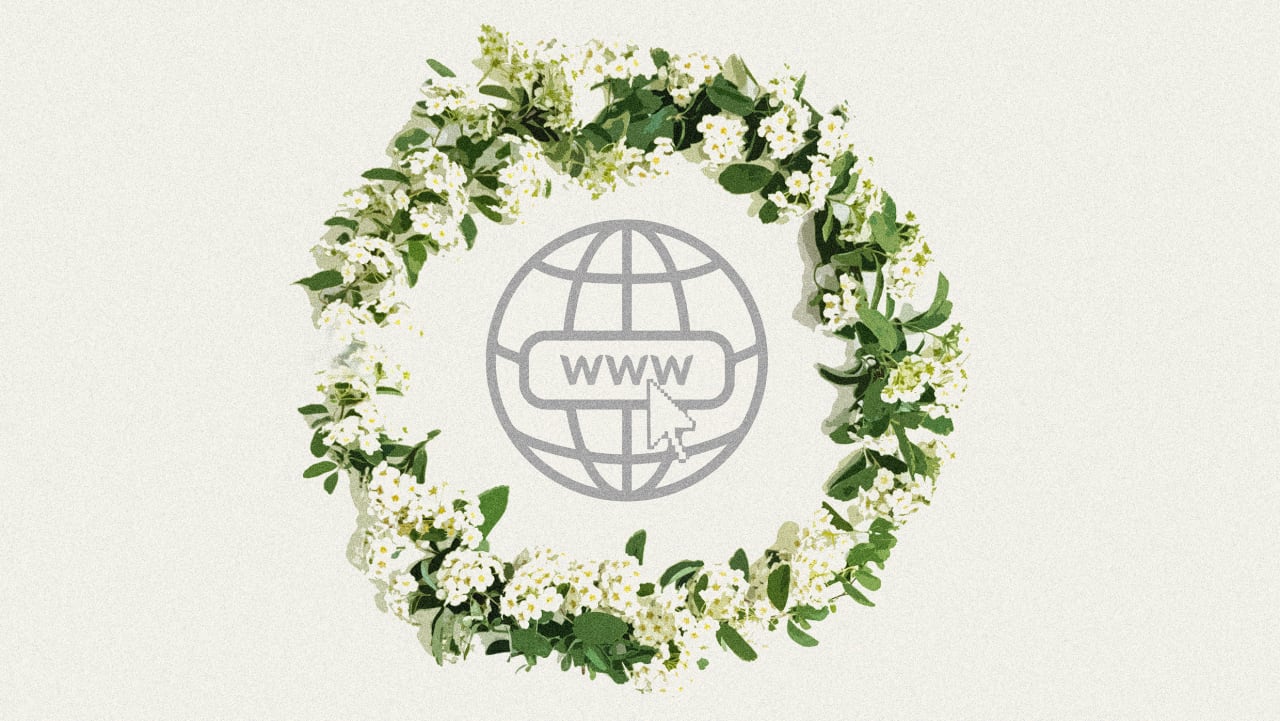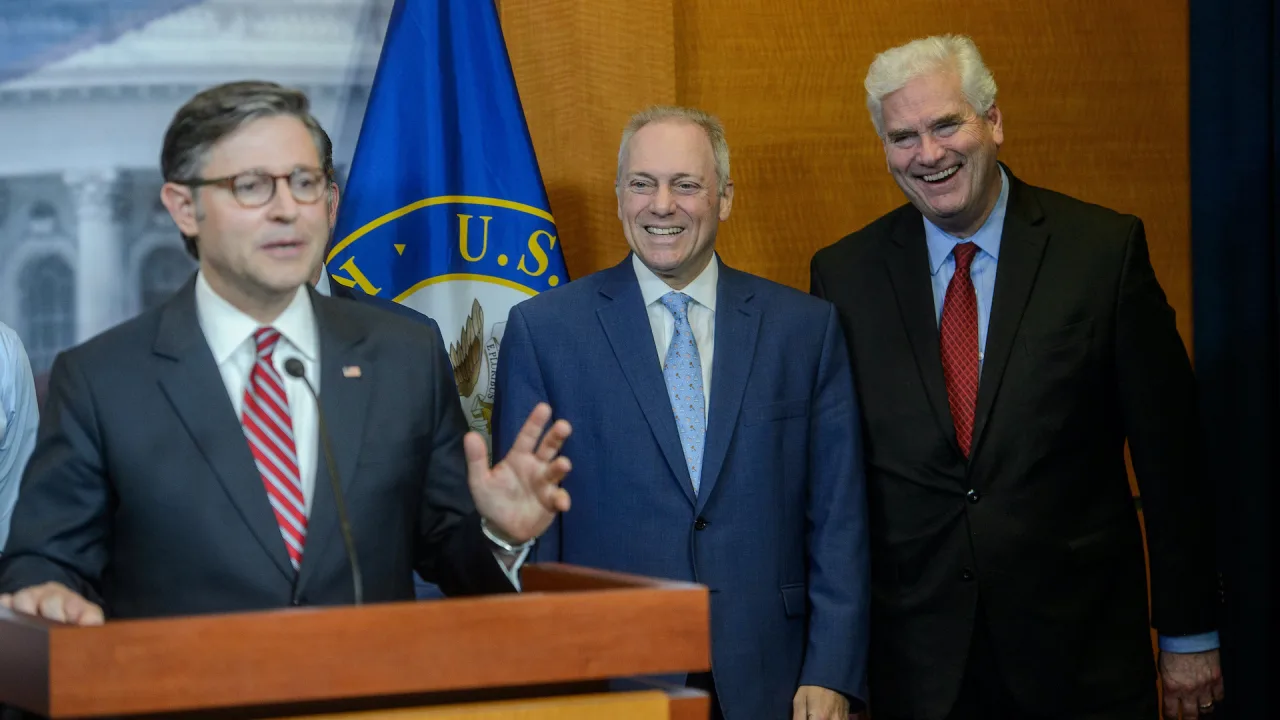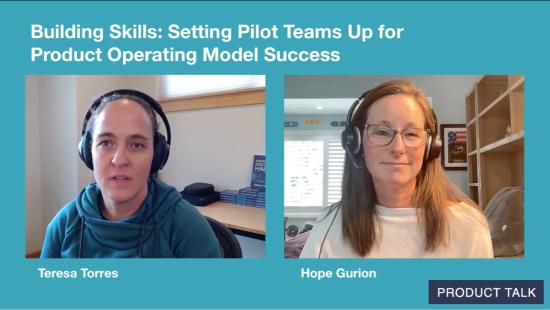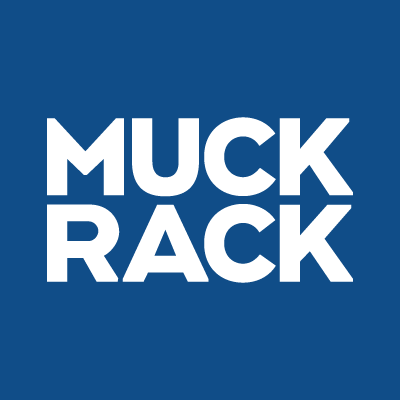Training AI to Detect Disease: Stand Up To Cancer’s Julian Adams
Julian Adams tried but didn’t succeed at retirement after a productive career as a medical chemist with several U.S. Food and Drug Administration approvals of cancer-related treatments, including cell therapy for bone marrow transplantation. Soon after, his participation in a Stand Up To Cancer advisory group led to his appointment as the nonprofit’s president and […]

Julian Adams tried but didn’t succeed at retirement after a productive career as a medical chemist with several U.S. Food and Drug Administration approvals of cancer-related treatments, including cell therapy for bone marrow transplantation. Soon after, his participation in a Stand Up To Cancer advisory group led to his appointment as the nonprofit’s president and CEO.
The research organization raises money to advance the diagnosis of numerous cancers. Given rapid technological advancements, our podcast hosts were eager to invite Julian on the show to share how Stand Up To Cancer uses artificial intelligence to aid in this pursuit.
For more information on Stand Up To Cancer and how to donate to the organization, please visit this website.
Subscribe to Me, Myself, and AI on Apple Podcasts or Spotify.
Transcript
Shervin Khodabandeh: How does AI advance the medical community’s ability to detect and fight cancer early? Find out on today’s episode.
Julian Adams: I’m Julian Adams from Stand Up To Cancer, and you’re listening to Me, Myself, and AI.
Sam Ransbotham: Welcome to Me, Myself, and AI, a podcast on artificial intelligence in business. Each episode, we introduce you to someone innovating with AI. I’m Sam Ransbotham, professor of analytics at Boston College. I’m also the AI and business strategy guest editor at MIT Sloan Management Review.
Shervin Khodabandeh: And I’m Shervin Khodabandeh, senior partner with BCG and one of the leaders of our AI business. Together, MIT SMR and BCG have been researching and publishing on AI since 2017, interviewing hundreds of practitioners and surveying thousands of companies on what it takes to build and to deploy and scale AI capabilities, and really transform the way organizations operate.
Sam Ransbotham: Hey, everyone. Thanks for joining us today. Today, Shervin and I are talking with Julian Adams, president and CEO of Stand Up To Cancer. Julian, thanks for joining us.
Julian Adams: Glad to be here. It’s a pleasure to meet you, Sam.
Sam Ransbotham: Shervin and I enjoyed learning more about your organization when we met, but for our listeners, can you briefly describe what Stand Up To Cancer is all about?
Julian Adams: Stand Up To Cancer is a research organization. We’re a charity, a nonprofit, that raises money to fund cancer research. And, primarily, we encourage team research. [We call our] favorite style of research dream teams. That means multi-institution, many investigators, all working on very difficult problems in cancer.
Shervin Khodabandeh: Do those dream teams ever include any nonhumans, like AI of some sort?
Julian Adams: AI is pervasive. We can’t not use it. It’s one of the tools, just like a piece of laboratory equipment. It’s part of everything we do in terms of getting more accurate and deeper information.
In cancer research, two of the most obvious ways are in radiology. When you get a CT scan or an MRI, that pattern recognition is better seen by a computer than by the human eye. And if you show it 10,000 or a hundred thousand of those scans, it gets really good at detecting abnormalities. So that’s the scanning piece. Now, as you know, in cancer, we often have to take a biopsy and look under the microscope. And there, too, it’s about pattern recognition.
The microscope magnifies the image. We can stain the tissue of origin and see what’s normal, what’s abnormal. So you can see the cancer, and you can see adjacent cancer. The computer is very, very good at distinguishing that, much better than the naked eye. The AI component of this is that the more images you show the computer, the more it learns, the better and more accurately it describes the abnormality.
Sam Ransbotham: … ImageNet is a database of 14-plus million images that ... started with a contest about a decade ago for image recognition. It got really, really good over that last decade. In fact, I think it got to the point where the error rates are about the same as human error rates, or maybe even better, than human error rates. How many images does it take to be able to read a CAT scan or MRI or a slide?
Julian Adams: Depending on the kinds of questions being asked and the level of resolution, you need more images rather than fewer images.
Typically, we will start with a training set. That may be 500 to 1,000 images. Those will typically be retrospective, so they’ve already been diagnosed as a cancer. We train the AI algorithm to define that as cancer. And then we have to do prospective studies, and those can number in the tens of thousands, or as you said, perhaps even millions, to get better and better and better. The beauty of AI is the machine keeps learning. Humans get tired. They get sleepy after long workdays. They need another cup of coffee. They can never eventually compete with a computer.
There are other applications though in, for example, drug discovery. We used to do drug discovery by making hundreds of thousands of compounds and screening libraries with robotic instruments to see what binds to the receptor in the tissue of interest. Today, we can do all of that in silico because of programs like AlphaFold, which tells you how proteins fold.
Proteins usually are the targets for drugs or antibodies. The folding of those proteins and the three-dimensional structures of those proteins can be predicted by the incredible power of AlphaFold. One can imagine doing a lot of the drug discovery on computers and eventually needing not to make hundreds or thousands of compounds to see which one is the best, but just making maybe a few dozen compounds, because the computer can also give you a hierarchical assessment of which compounds fit best.
There’s a fourth area that I haven’t touched on yet, and that is in the early detection of cancer. This is something that I am most focused on recently, and that I’m guiding Stand Up To Cancer to pay a great deal of attention to.
Let me cite a few facts. If you can detect cancer at Stage 1, where it’s ... locally advanced, hasn’t spread yet … you have a 90% chance of curing that cancer, either through surgery, radiation, or there may be drugs used as well. What I’m most excited about is the area of therapeutic vaccines, which we can come back to. By contrast, if this tumor has spread and become Stage 4, where it’s been disseminated, it’s in multiple organs, the five-year survival rate is about 10%. So at least for the state of the art today, if we could detect cancer earlier, we will save many more lives and cure many more patients.
Shervin Khodabandeh: Is there such a thing as a Stage 0.5 or Stage 0.25? You talked about Stage 1. Is any chance of us moving that timeline even further back?
Julian Adams: It is really an integer. You have precancer, or something called, let’s say, an adenoma. But an adenoma can progress to a carcinoma, and that’s cancer. So adenomas are like polyps in the colon or just growths. They’re not malignant in nature, and they won’t spread. Still, you don’t want them there, because as the DNA of the tumor acquires additional mutations, you can have a transformation to cancer. So adenoma to carcinoma is the fear.
Sam Ransbotham: If I was listening to this, I would think, “Oh, great, cancer solved. We can just throw a bunch of images at it and … everything’s wonderful.” Take us back to reality here.
Julian Adams: Here’s the reality. It’s hard to detect cancer. If you are doing it with a CT scanner or an MRI imager, you have to see a mass. And if that mass is less than a millimeter, it may be impossible, certainly for the human eye, but even maybe for the computer, to do it. But even if the computer can do it, the scalability to be able to do tens of millions of pages of subjects, the computer [is] going to have a harder and harder time to do that, the smaller the tumor [is]. Eventually, it will find the tumor, but you’ve got to put people through scanners. So the scalability of that is the problem.
What I’m talking about now are liquid biopsies. That’s being able to detect cancer in blood, in saliva, in sweat, in urine, bodily fluids. And that’s easy to get. A blood draw is very standard. Your [primary care] physician can do that. You can spit [saliva] in a tube, and so forth.
Then the question becomes, what is the sensitivity and specificity of measuring DNA if you’re measuring blood? RNA, sometimes you can measure that in blood or saliva, or proteins in urine. The sensitivity question is the reason we need machine learning and artificial intelligence, to improve the sensitivity and accuracy of those tests.
Sam Ransbotham: You slipped into a little bit of statistics talk here with the words sensitivity and specificity. Can you give us some working definitions for those?
Julian Adams: Sensitivity means how many parts per million or how many parts per billion. Can I detect one cell in a billion, or can I detect one cell in a million? That’s the sensitivity.
The specificity is what am I detecting? Is that a lung cancer cell? Is that a prostate cancer cell? Is that a breast cancer cell? So you need both because you need to know where to look. [Detecting it] in the blood just tells you [that] you have mutations. Those mutations may lead to a malignant cancer. And where do I look? Well, the specificity tells me it’s probably breast cancer or it’s probably lung cancer. Then we can triage those patients to the MRIs and the CT scanners, and we confirm that.
Those scanners are critically important, because, ultimately, they’re the most accurate way of detecting cancer. But for population-based screening, to prevent the development of late-stage cancers, we want the most sensitive tests and the most accurate tests to be achievable through bodily fluids, which [are] also very scalable. You could do tens of millions of patients, of 40-year-olds and 50-year-olds, and detect precancer and then frank cancer.
Shervin Khodabandeh: It feels like we’re hearing two different things. One is the use of artificial intelligence to get better at doing these better tests, the image-based tests, the radiology-based tests. But then you’re also, I think, offering some hope of alternative paths for new tests that we maybe still haven’t designed. You mentioned liquids, but maybe there’s a bunch of other things we haven’t figured out yet. Is that possible?
Julian Adams: Absolutely. Another use of AI is in developing really accurate electronic medical records. You can talk into the computer. The computer takes notes. It makes very accurate assessments. You can tell [it], of course, your age, where you live. You can talk about your family members. If you have a first-degree relative [who’s] had cancer, you have higher risk. What are your habits? Do you drink? Do you smoke? What’s your body mass index? All of which can increase the risk factors in cancer.
The electronic medical record also contains all of the drugs you’ve had prescribed to you. So if, for example, you’re diabetic and dependent on insulin or taking anti-diabetes drugs, those are risk factors for developing diseases like pancreatic cancer. About 50% of pancreatic cancer patients are prediabetic or diabetic. Again, all of this can be done through statistics, and that’s where the AI is so good. It’s all mathematics, and computers are just fabulous at that.
Sam Ransbotham: That seems really appealing. On the other hand, as I’m sitting here thinking about it, I feel like every time I go to the doctor, they ask me [to fill out] the same form, with the same questions over and over again. I really like this promise of us remembering these things. But I feel like in practice, we’ve got a [long] way to go before I [won’t] have to fill out the same form with the same history every single time.
Julian Adams: That’s just beginning to change now. This is a personal story: My primary care physician was 60 years old. He would take my history. I’d have to fill out all those forms. He sat at his computer typing while talking to me, never looking me in the eye. He just retired and I [now] have a young, 30-something physician who’s trying this new tablet. And the tablet is listening to our conversation.
He’s making eye contact with me, and we’re having a conversation, and he’s asking me all those same questions. But the tablet knows how to turn it into a really accurate medical record. So I don’t have to fill that thing. And then he just checks, you know, maybe I drank alcohol last year. Am I still drinking alcohol? Have I stopped drinking alcohol? How many times? How many glasses do I drink a day? Am I lying?
The computer can actually figure out, and is pretty smart at figuring out, whether I’m telling the truth based on patterns it can detect that the human ear and human observation can’t.
Sam Ransbotham: As you’re talking about these things, I think it’s pretty appealing, the idea that we start to get a lot more signals of problems. We start to get lower cost signals through, let’s say, blood draws. And we start to get better and better signals. Is there any downside to that?
Julian Adams: The downside is that we deploy it too early, and we deploy it before we’ve really validated that these tests can be accurate. As I said, you do a training set with fluids and techniques that you know that you’re really testing cancer. And then you have to do prospective clinical trials, and it has to be multicentered, and it has to be powered such that the result on tens of thousands — if not hundreds of thousands of patients — can validate that training set. And then, only after that, can you really begin to start trusting the AI.
Sam Ransbotham: That’s pretty interesting. … Obviously, we as a society have been working against cancer and other diseases for years and years. What made you attracted to using artificial intelligence and machine learning to try to solve these problems?
Julian Adams: I’ll come back to the statement I made earlier. If you can detect cancer at Stage 1, you have an 80%-90% chance of curing that cancer. That means you need very sensitive detection tools to detect Stage 1, because cancers progress. They start at Stage 1, but sometimes they rapidly progress within weeks or months into Stages 3 and 4. And now they’ve spread, and now the problem is much more difficult, because you’re dealing with multi-organ systems, including the potential for brain metastasis. It’s very difficult to treat brain metastasis because of the blood-brain barrier. That doesn’t allow us to introduce chemotherapy or even immunotherapies easily, to get them to the brain.
Shervin Khodabandeh: Julian, you mentioned therapeutic vaccines earlier. What did you mean by that?
Julian Adams: If one has a small burden of cancer, and I mean a Stage 1 that’s been resected, or surgically removed, it’s possible that you still have a few hundred thousand or a million cells not imageable, not viewable. Maybe [they’re] not even easily detected in the blood, but they’re there. And they may be dormant and incubate over the next months or years. After that, they can develop into full-blown cancers.
Well, if you’ve removed the cancer and you know where the genetic defects are, those genetic defects allow us to make vaccines. We learned how to do this for infectious diseases first, of course. And now, for the first time, we’re starting to learn how to do this for cancers. Because a genetic defect leads to a peptide, or a sequence of amino acids, where you have unnatural amino acids or an unnatural sequence that’s foreign. It’s not self. And the immune system should be able to detect that.
Now, we have to help the immune system to detect that, by creating a vaccine [that] awakens the immune system and tells the immune system, “There’s a danger signal. There’s something foreign in your body. Find it.” Those cells that present those foreign antigens now can activate a T-cell response, and the T cells can expand, recognize that cell, and kill only the tumor cell and leave the normal tissue behind, unscathed.
Sam Ransbotham: That’s pretty appealing. But I’ve not heard of this in practice. How far along is this?
Julian Adams: The first randomized clinical study that was published last year was Merck and Moderna’s collaboration in the adjuvant setting of melanoma. So the melanomas were removed. The vaccine happened to be an mRNA vaccine. That’s their particular form of vaccine. There are other types of vaccines. But then [with the] mRNA vaccines, all the mutations were recorded.
There was some algorithm to decide which are the worst mutations, which mRNA should be formed into a vaccine. So patients got either immunotherapy plus vaccine or just immunotherapy alone. We saw a substantial benefit for when you combine the vaccine with immunotherapy. To confirm that, [there] was a Phase 2 trial that was published last year. So they’re now confirming it with a larger Phase 3 trial, doing the same thing in a much larger patient population.
Shervin Khodabandeh: Julian, you’re leading a fascinating organization. Can you tell us a bit about your background and how you got into this field?
Julian Adams: Let me introduce myself. I started life as a medicinal chemist. I did my Ph.D. at MIT and did a postdoctoral fellowship and then went into industry. I went into pharma to learn how to make drugs and develop drugs. This is way back in the early ’80s. And over the years, I’ve become more and more fixated with problems in cancer. I’ve worked in cancer research for over 40 years.
Along the way, I had the opportunity to join Stand Up To Cancer’s Scientific Advisory Committee. And I was a reviewer of many of the projects that Stand Up To Cancer funded. I enjoyed watching other researchers tackle very difficult problems. I learned a lot about how cancers develop, how cancers spread, and how to tackle them with therapies, and how to measure the biological outcomes of our treatments.
With several FDA approvals under my belt, the last one being about a year and a half ago, I developed a cell therapy for bone marrow transplantation, and it was FDA approved. At the ripe age of 68, I decided maybe I’m going to retire. Well, I failed retirement miserably.
I met with the folks at Stand Up To Cancer [at] their annual scientific summit in California. I went up to Sherry Lansing, who’s the chair of the board and one of the original founders, the nine extraordinary women who founded Stand Up To Cancer. They’re all from the entertainment industry and the media industry. And I said, “I have more time on my hands.” And she said, “Great. Come and join us as our chief scientific officer.” And I did that for about six months. And last January, I was demoted to CEO.
Sam Ransbotham: Very interesting. I want to push back a little bit skeptically, let’s say. I think about the [COVID-19] pandemic, and I felt like everything I was reading [said that with] artificial intelligence and machine learning, we’re going to detect COVID and solve all of our problems. And I think spectacularly that didn’t work in many ways. Why is this round any different than many of the other promises we’ve had about technologies solving something as looming and as onerous as cancer?
Julian Adams: Let’s define the two problems, because they’re very, very different problems. COVID was a virus. Viruses mutate at an extraordinary rate almost every day. Cancers also mutate but at a much, much slower pace. A thousand-fold slower pace.
So think about it in that way. We can chase those mutations in cancer faster than we can chase a mutation in a virus because viruses are constantly mutating. So we still have COVID among us. It’s become an endemic virus, like the common cold, like the flu. Cancers are more diabolical in many ways, because they eventually kill us, and they spread to different organs.
They evade our immune system. We’ve recently started to understand how to activate that immune system with drugs that are called checkpoint inhibitors. They block that check of the immune system that is dormant and reawaken it, or through various T-cell therapies that are specifically designed in a personalized way to attack one’s cancer. The two fields have a lot in common. Their genetics are true for viruses, and they’re true for cancers, but the rates are very different. And the complexities are very different because the host is behaving very differently under both of those scenarios.
Sam Ransbotham: You think back to a hundred years ago, we were doing the first surgeries with anesthesia. Prior to that, it was chop it off, or if it’s broken, then we can’t really fix it. [In terms] of surgeries and repairs … we’ve come an amazing distance in the last hundred years. As you’re saying, it’d be nice to keep going.
Julian Adams: To add to that, our life expectancy went from 35 or 37 years old into our late 70s, 80s. And who knows what the upper limit is?
I’m not suggesting that we don’t want to live forever, but I think we want to live normal, healthy, productive, quality lives, and nobody can argue with that.
Sam Ransbotham: That’s hard to take a position against. We hope that these tools will help toward that. We get very focused on artificial intelligence and machine learning, obviously, because of this podcast. But this is, I guess, yet another tool in a growing body of knowledge that accumulates over time.
Like you said, it’s really important that we continue to do that. Thank you so much for taking the time to talk with us. We’ve enjoyed learning so much about this, and I hope you’re successful. These are some important things you’re working on.
Julian Adams: Sam, thank you for taking the time. It was a pleasure talking with you, and I hope your listeners appreciate some of what I’m saying and help support the future of funding cancer research, where the U.S. leads the world in terms of innovation.
Sam Ransbotham: Well, listeners, [it’s] hard to believe it, but that was the final episode of Season 11. We thank you very much for listening and appreciate all your suggestions and comments.
We’ve covered a lot of ground since we began this podcast back in 2020. And we’re thrilled to announce that we will be back in a few months with more episodes.
But some changes are coming. Our long-standing podcast collaboration with BCG is coming to an end. I would personally like to thank Shervin for being an exceptional cohost. And I’m not just saying that because he is a chemical engineer. We have a lot of fun recording these, and, fortunately for our listeners, we cut out most of that nonsense. Shervin’s unique perspectives and inquisitive questions elevated our conversations and caused me to think about things differently, too. We will miss him, but he remains a friend of our show.

